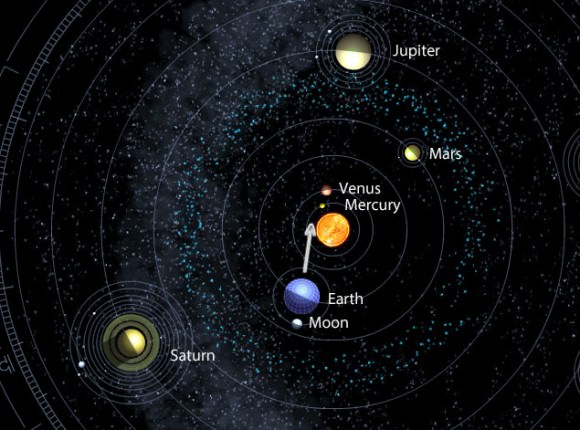Planning a barbecue this weekend? You may want to top it off with a look at three bright planets shuttling about the western sky at dusk. Jupiter, Venus and Mercury gather for nearly a week of delightful alignments including three separate conjunctions staring right now. Mercury and Venus pair up on Friday; Mercury and Jupiter on Sunday and Venus and Jupiter on Monday. All three form a series of ever-changing triangular arrangements as the nights go by.

Brightest of the bunch is Venus followed by Jupiter and then Mercury. The key to seeing them all is a clear sky and unobstructed view of the west-northwest horizon. Best time for viewing is a half hour to 45 minutes after sunset. Although the diagrams make the planets look like largish disks, difference in size is a device to show their brightness. Bigger means brighter.
Mercury gradually climbs higher in the coming days, Venus will remain in nearly the same spot and Jupiter slowly drops off toward the horizon. Seeing three planets bunch up isn’t rare, but it is unusual – all the more reason to go for a look if your skies are clear. Alignments like this occur because all 8 planets lie in essentially the same flat plane. As we look across the solar system, sometimes near planets and far planets lie along the same line of sight and appear side-by-side in the sky. They may look close to each other but of course they’re millions of miles apart.

This week Venus is 154 million miles (248 million km) from Earth, Mercury 113 million (182 million km) and Jupiter a distant 562 million (904 million km). The planet position diagram above will give you a sense of their current arrangement in space.
Whenever you go planet-seeking in bright twilight, I always recommend bringing along a pair of binoculars. They penetrate haze and make finding these bright little dots much easier. Enjoy the show!


I took a photograph of them yesterday. Will try today as well.
http://www.thevenustransit.com/2013/05/jupter-venus-and-mercury.html